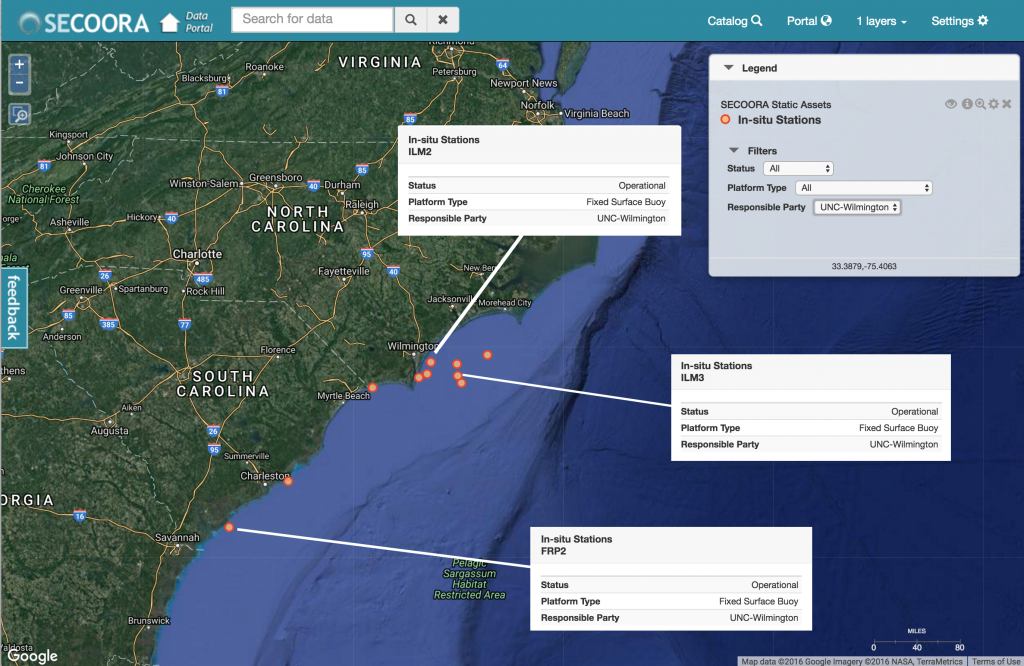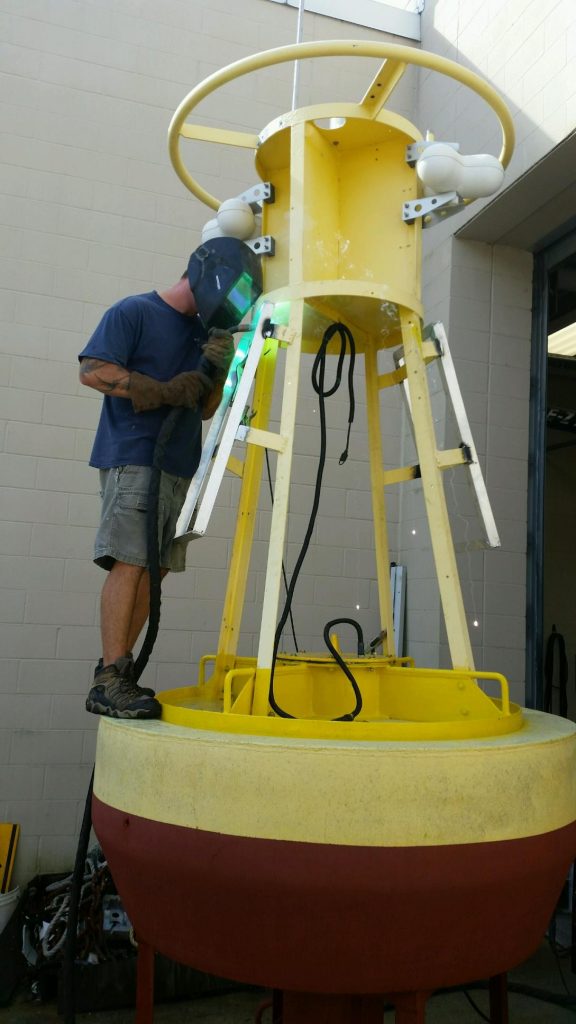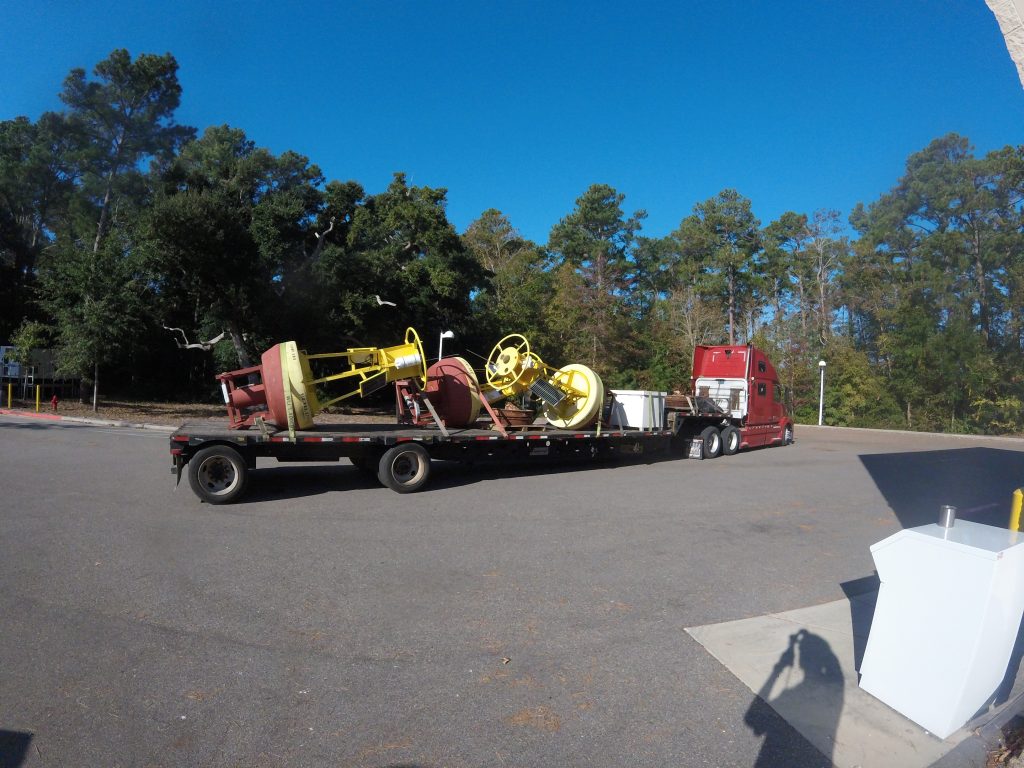Three buoys in the coastal waters of North Carolina and South Carolina will soon be replaced.

Figure 1. Pictured are the UNCW Coastal Ocean Research and Monitoring Program (CORMP) buoys on the SECOORA Data portal. Scheduled for deployment in the first week of the November, the updated buoys will replace the currently deployed FRP2, ILM2 and ILM3 stations (highlighted). FRP2 buoy stopped transmitting data on October 7 during Hurricane Matthew.
Over the past months the UNCW CORMP team restored old buoys, designed and tested the data collection, sensor and telemetry packages, and upgraded the solar power systems.

Figure 2. Chris LaClair of UNCW CORMP is welding on new solar panel frames. The buoys rely on photovoltaic panels to provide power for sensors, data loggers and communications. Image Credit: Brett Bolton, UNCW CORMP
The CORMP team replaces the buoys with new systems approximately every year. Due to last minute changes and failures at other stations, the current ILM2 buoy has been in the water since 2014. Upgrades to the systems being deployed include a more robust power system as well as secondary meteorological sensors. Increased power on the buoy will allow for more data transmission and having a secondary sensor onboard insures continuity in data collection.

Figure 3. Buoys are on the truck ready to travel to the UGA’s Skidaway Institute of Oceanography where they will be loaded onto the Research Vessel Savannah. The research cruise will head out to sea in the first week of November. Image Credit: Brett Bolton, UNCW CORMP
The buoys are maintained by Coastal Ocean Research and Monitoring Program at the University of North Carolina Wilmington Center for Marine Science with funding from the NOAA led U.S. IOOS and SECOORA. Access UNCW CORMP buoy data here.
Related news

New High Frequency Radar at the Dry Tortugas National Park Improves Ocean Surface Current Measurements Across the Straits of Florida
A new CODAR Low-Power SeaSonde HFR has been deployed by the University of South Florida at Fort Jefferson on Garden Key to measure surface currents to improve understanding and prediction of the Gulf of Mexico Loop Current.

President Biden Proposes Significant Budget Cuts to IOOS for 2025
President Biden’s recent 2025 budget proposal slashed the funding allocated for the Integrated Ocean Observing System (IOOS) by 76%, which would effectively shut down coastal and ocean observing efforts.

Webinar: NOAA Resources to Help Coastal Communities Understand Flood Risk
Join us Wednesday, March 27th at 12 PM Eastern Time for SECOORA's Coastal Observing in Your Community Webinar Series to hear from Doug Marcy with the NOAA Office for Coastal Management.